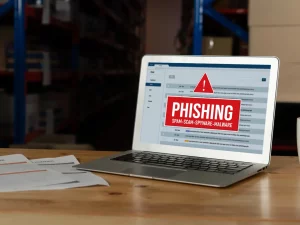In a digital world shaped by constant change and emerging threats, knowing your risks is not enough. Managing them strategically is what separates mature organizations from the rest. A risk register is more than just a list of potential problems; it is the operational heartbeat of an effective risk management framework. It connects security teams to leadership, translates technical vulnerabilities into business impact, and prioritizes action based on exposure and consequence.
Whether you are building a cybersecurity program from the ground up or refining your enterprise risk posture, the risk register is essential. It brings structure to complexity, clarity to uncertainty, and alignment across departments. Here’s a deeper look at how the risk register functions, what makes it powerful, and how it becomes an instrument for long-term resilience.
The Role of a Risk Register in Cybersecurity Governance
In cybersecurity governance, decisions must be guided by data, not by instinct. A risk register acts as a decision-support tool, enabling security leaders to evaluate, communicate, and mitigate risk across the organization with precision. Unlike one-time assessments or static reports, a risk register evolves continuously and is deeply embedded in strategic operations, which typically includes:
- Detailed risk statements tied to real systems, processes, or assets.
- Impact and likelihood scores mapped to a standardized risk matrix.
- Inherent vs. residual risk ratings after controls are applied.
- Mitigation strategies, owners, and deadlines.
- Acceptance or escalation decisions to senior leadership or committees.
Beyond Compliance: Why Risk Registers Are Business-Critical
Many organizations create risk registers to meet regulatory requirements, but the real value goes far beyond compliance checkboxes. A well-maintained risk register drives proactive cybersecurity, enabling leaders to make risk-informed decisions on resource allocation, budgeting, and control design. Here’s how it supports strategic cybersecurity operations:
- Budget justification: Use risk scoring to prioritize funding for high-risk areas.
- Incident planning: Helps anticipate high-impact scenarios and prepare response playbooks.
- Vendor oversight: Tracks risks associated with third-party platforms and integrations.
- Board alignment: Offers executives a digestible, business-impact-focused view of cyber exposure.
- Audit efficiency: Reduces redundancy and ensures evidence of active risk management.
Examples of Critical Risk Entries
Not all risks are created equal, and the richness of a risk register depends on how clearly and contextually risks are defined. A deep, effective register does not just state “phishing”, it specifies what kind of phishing, who it targets, and what the potential impact is on specific functions. Examples of high-value cybersecurity entries include:
- Business Email Compromise targeting the finance team, leading to potential fraudulent payments
- Unauthorized access via legacy VPN accounts with no MFA enforcement
- Insider misuse of privileged access in R&D environments with sensitive IP
- Third-party data processor lacking encryption-at-rest controls
- Insecure API exposure allowing unauthenticated queries to customer data
Final Thought
A cybersecurity risk register is more than an inventory, but an intelligence tool. It brings together data, judgment, and structure to enable smarter decisions, more agile responses, and deeper alignment between technology and business. In a world where threats are increasingly complex, the ability to track and prioritize risk with discipline becomes a competitive advantage.
At Terrabyte, we guide organizations across Southeast Asia in building and evolving their cybersecurity governance practices, including the design and execution of risk registers tailored to their environment. Whether you’re facing regulatory demands or striving for operational excellence, our expertise helps transform risk from a liability into a leadership asset.
Let Terrabyte help you turn cybersecurity risk into strategic clarity. Contact Terrabyte today!




